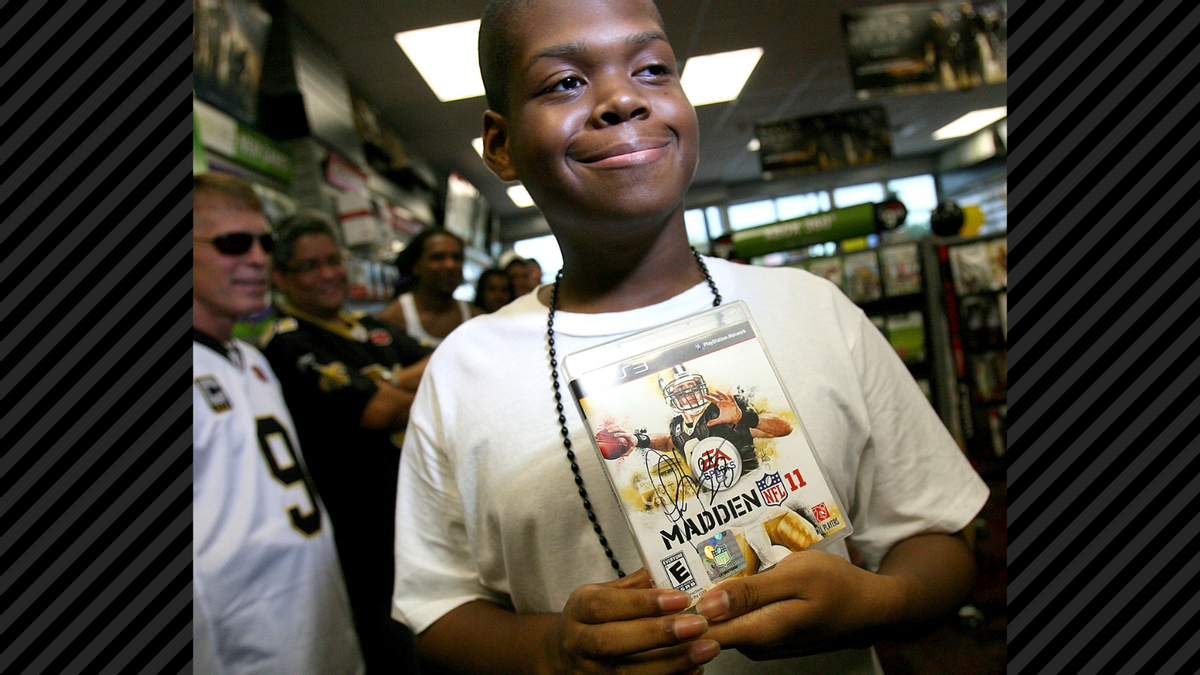We often use superstition to help us understand unusual patterns that have no logical explanation, and to help us assert some feeling of regulation over phenomena we cannot control.
Not surprisingly, superstition is something we see regularly in the world of sports — how else to explain why a few teams come up short of winning championships for decades on end, why some players suddenly experience precipitous drop-offs in performance, or why a particularly good player makes the bad play that ends his team’s championship hopes? With the application of superstition, all is explainable; we can attribute these kinds of events to factors such as “the Curse of the Bambino,” the “sophomore jinx,” or a player’s unwise decision to wear a jersey bearing the number 13.
In recent years, we’ve seen the rise of several similar superstitions that tie star athletes’ experiencing poor performance and/or serious injuries to their recently having been recognized with singular honors. First was the Sports Illustrated cover jinx, followed later by the Campbell’s Chunky Soup curse and the now-legendary “Madden Curse.”
It is to that last phenomenon which we now turn our attention. The “Madden Curse” refers to the popular EA Sports series of NFL-based video games, named after former Oakland Raiders head coach and TV football analyst John Madden (who died in 2021). First produced in 1989 as "John Madden Football", the video game has been known as "Madden NFL" since its developers signed a licensing deal with the NFL in 1993. New versions are released annually to incorporate new and improved features and rosters based on current NFL players.
The following is a list of the players who have graced the covers of Madden NFL over the years, and the circumstances involving them that have contributed to the development of the “Madden Curse” superstition. To clarify some nomenclature, we’ll point out that NFL seasons (including playoffs) span calendar years (from August or September to the following January or February), and the title of each version of Madden NFL includes the year following its release. Therefore, the term “2001 season” (or simply “2001”) would refer to the NFL season spanning 2001-2002, and Madden NFL 2002 would refer to the version of Madden NFL released just prior to the start of the 2001-2002 NFL season.
2000
The 2000 edition of Madden NFL was a gentle easing-in to the curse. This was the last edition of the game to feature a photograph of John Madden on the front of the box (as all previous editions had done), but it also included a background picture of the Detroit Lions’ star running back (and future NFL Hall of Famer) Barry Sanders.
As events turned out, Sanders didn’t play a single down during the 1999-2000 season (or ever again), shocking the Lions by abruptly announcing his retirement and ending his ten-year career just before the start of training camp that summer.
Since Sanders quit well before the start of the 1999 regular season, EA Sports had enough time to substitute a different graphic on the packaging of later shipments of Madden NFL 2000. The newer covers replaced the Madden-Sanders combination with a picture of Green Bay Packers running back Dorsey Levens, who spearheaded a Packers team that had just played in three straight NFC Championship Games and back-to-back Super Bowls.
Although Levens performed reasonably well in 1999, he was bothered by a bad knee that he had re-injured the previous year, and Green Bay finished out of the playoff picture with a so-so 8-8 record. Levens was used only in a reserve role after that, and the Packers released him at the end of the 2001 season.
2001
The 2001 cover of Madden NFL featured Tennessee Titans running back Eddie George, who the previous year had led his team to the Super Bowl (where they came up just short against the St. Louis Rams).
Although George enjoyed his best season ever (in terms of yards gained rushing and touchdowns scored) in 2000, he bobbled a pass (that was subsequently intercepted and returned for a touchdown) in the Titans’ season-ending Divisional Playoff loss to the Baltimore Ravens, and the following season, hampered by injuries, he saw his rushing average sink to an all-time low.
2002
The 2002 cover of Madden NFL featured Minnesota Vikings quarterback Daunte Culpepper, who the previous year had made an impressive NFL debut in taking his team to the NFC Championship Game (which they lost to the New York Giants).
In 2001, however, the Vikings struggled to a disappointing 4-7 record before Culpepper suffered a knee injury and missed the last five games of the year (while Minnesota finished the season a dismal 5-11).
2003
The 2003 cover of Madden NFL featured St. Louis Rams running back Marshall Faulk, whose rushing and receiving prowess had led his team to the Super Bowl twice in the previous three years.
But Faulk was plagued by an injured ankle during the 2002 season, his yards gained rushing total dropped under the 1,000 mark (after four straight seasons of 1300+ yards), and the Rams missed the playoffs with a disappointing 7-9 record.
2004
The 2004 cover of Madden NFL featured Atlanta Falcons quarterback Michael Vick, who in 2002 (his first season as a starter) took a team with a dismal 16-32 record over the previous three years and led them to a respectable 9-6-1 finish and a spot in the NFL playoffs as a Wild Card entry.
In 2003, though, Vick suffered a fractured right fibula in a pre-season game one day after Madden NFL 2004 hit store shelves; he played in only five games that year as the Falcons sank to a lowly 5-11 record.
2005
The 2005 cover of Madden NFL featured Baltimore Ravens linebacker Ray Lewis, who had recorded a career-high six interceptions in 2003 as his team reached the post-season for the third time in four years.
But in 2004, Lewis failed (for the only time in his NFL career) to record even a single interception and sat out the final game of the season with an injury as the Ravens just missed qualifying for the playoffs at 9-7, and in 2005 he suffered a torn right hamstring in Baltimore’s sixth game and missed the rest of the season as the Ravens dropped to 6-10.
2006
The 2006 cover of Madden NFL featured Philadelphia Eagles quarterback Donovan McNabb, under whom the Eagles had amassed a superb 59-21 regular season record and made five straight playoff appearances in the previous five years, the last of which culminated in an NFC Championship and a Super Bowl match-up against the New England Patriots (which Philadelphia lost by three points). After he was selected for the 2006 Madden NFL cover, McNabb flouted the curse by saying that the injuries associated with it “might be a trend, but I don’t believe in the curse at all.”
True to form, McNabb suffered a sports hernia in the first game of the 2005 season. He played on for another eight games despite the painful injury, but after being re-injured in a contest against the Dallas Cowboys, he finally opted for surgery and missed the final seven games of the season as the Eagles finished last in the NFC East.
2007
The 2007 cover of Madden NFL featured Seattle Seahawks running back Shaun Alexander, whose 5.1 yards per carry rushing average in 2005 spurred the Seahawks to their best season ever and their first Super Bowl appearance.
Three weeks into the 2006 season, Alexander broke his left foot in a game against the New York Giants and missed his team’s next six games. The Seahawks made the playoffs but lost to the Chicago Bears in the second (divisional) round.
2008
The 2008 cover of Madden NFL featured Tennessee Titans rookie quarterback Vince Young, who skipped his senior year in college to enter the NFL after leading the University of Texas Longhorns to a national championship and was selected #3 in in the 2006 draft.
Young hurt the quadriceps in his right leg during the Titans’ fifth game of the 2007 season and didn’t participate in Tennessee’s game against the Houston Texans the following week, marking the first time in his career (including middle school, high school, college, and the NFL) that an injury kept him from playing.
As we explain at length in our article about the Campbell’s Chunky Soup curse, such superstitions are in a sense inevitable. Players are generally selected for honors when they’re at the pinnacles of their careers — when continued excellence has become the expected norm, and when anything less is considered disappointing. There’s nowhere to go from such lofty heights but down: Every player is subject to injury (especially in a contact sport such as football), all athletes eventually experience the decline of their skills with age (if injuries don’t prematurely end their careers first), and even top performers are not immune to having off-years or making occasional blunders in crucial game situations.
“Bad luck” happens to just about everyone sooner or later, but we only take especial note of it when it seems to fit a pattern.

